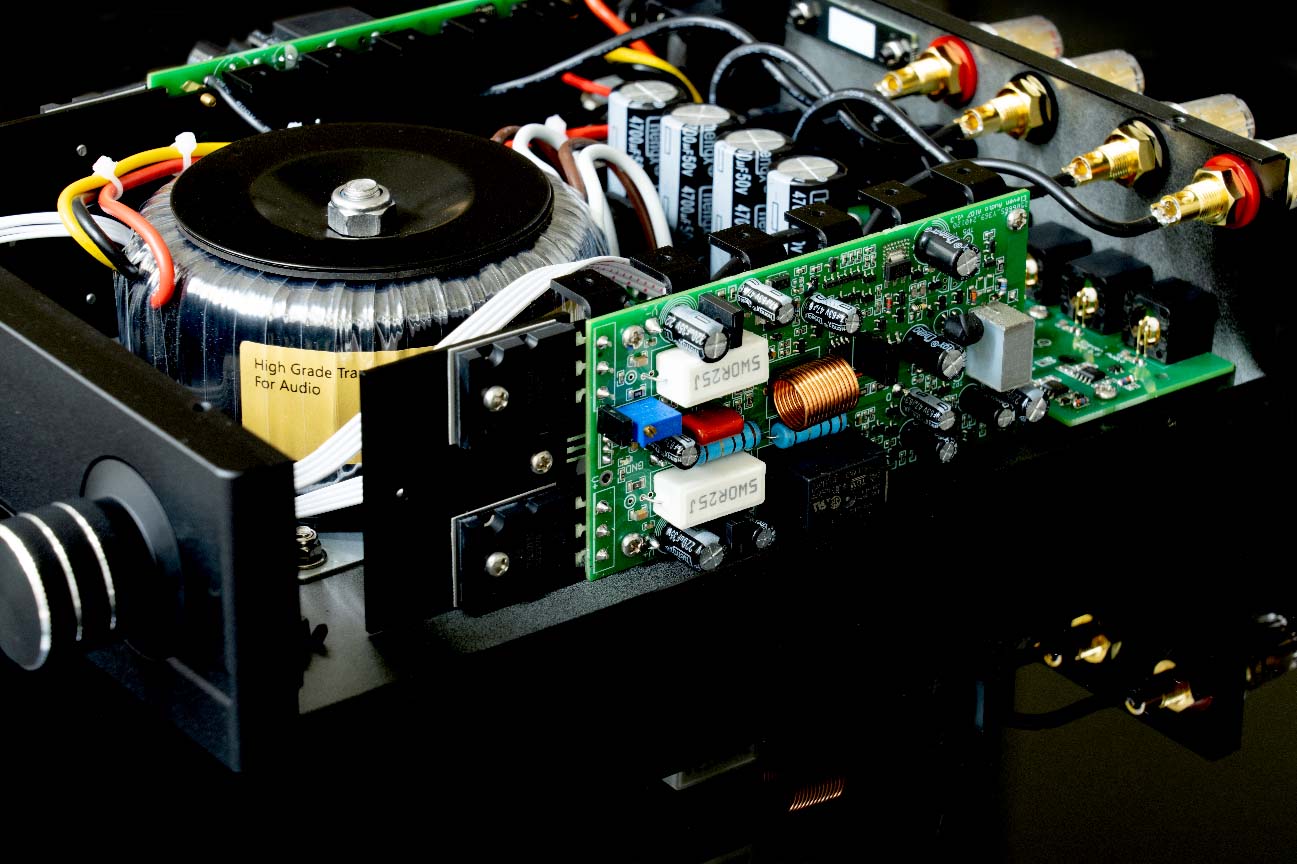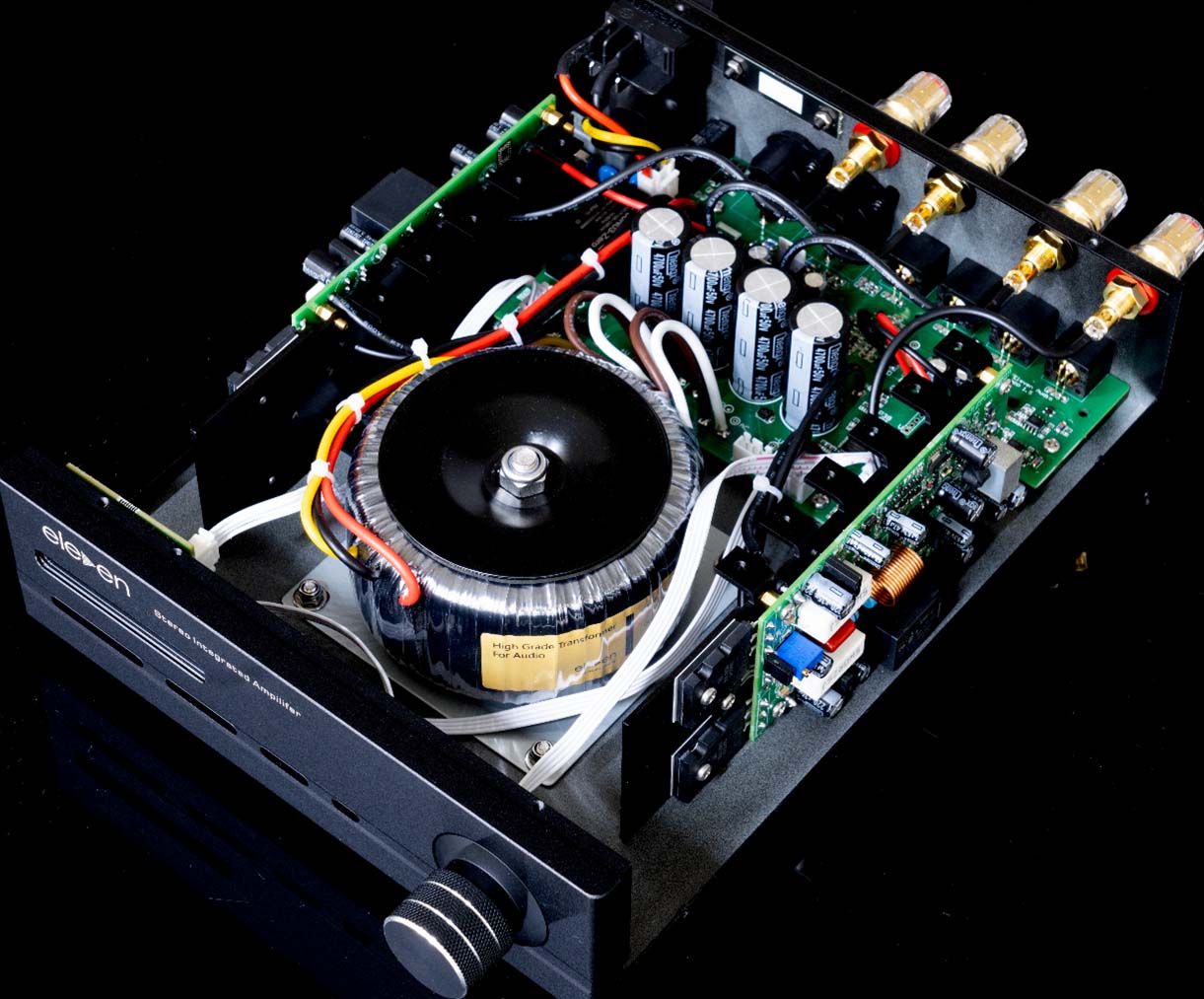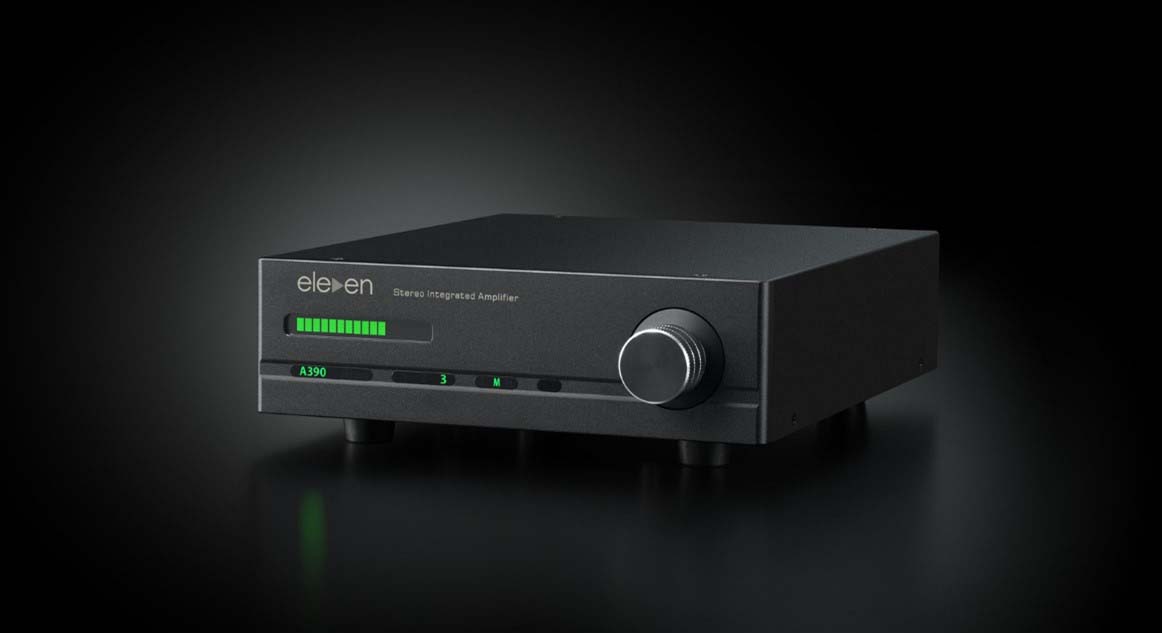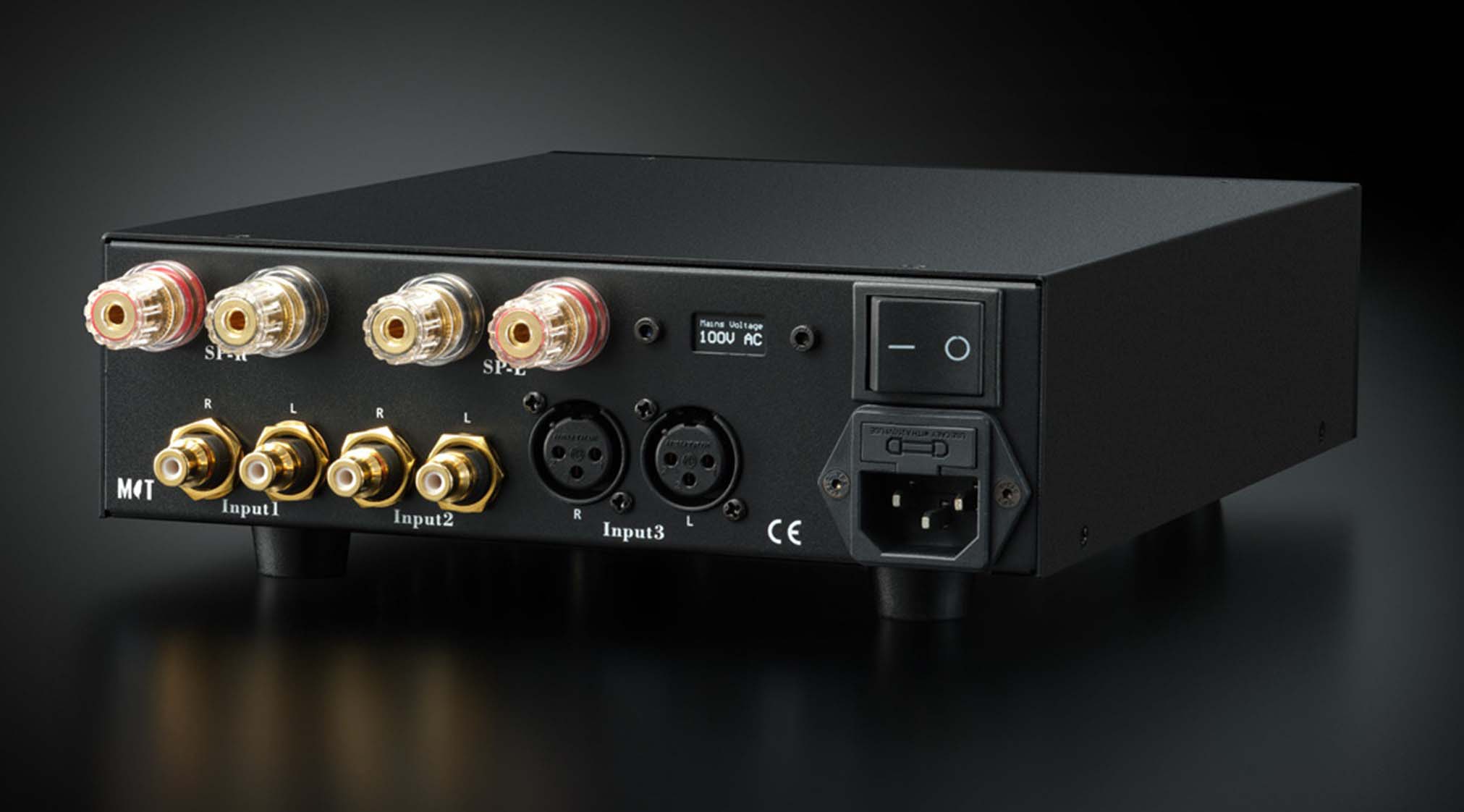
The A390 is a standard Class AB amplifier with three sets of input terminals (two unbalanced inputs, one balanced input, each with left and right channels) and one set of speaker output terminals. It can provide a maximum output power of 39W@8Ohm/CH and a maximum output current of 10A, equipped with a three-stage Gain setting. All operations can be performed through the rotation and pressing of the volume knob or via the infrared remote control. Additionally, the A390 is equipped with a comprehensive protection circuit to ensure safe usage.

The A390 contains two completely separated Mono Block amplifier modules, adopting the innovative VCIA (Voltage & Current Isolated Amplify) circuit architecture. This ensures that each amplification stage operates in a purely voltage or current amplification state, isolating the cross-interference between voltage and current amplification, significantly improving the overall performance of the amplifier. Each channel's amplification core includes over 300 components and uses modern control theory for the calculation and configuration of circuit zeros and poles, ensuring extremely high stability when driving various complex loads.
The core components of the A390 undergo 1% standard manual screening, surpassing the 2% standard of factory-matched tubes. During the design process, the A390 fully optimizes Thermal Dynamic Distortion (TDD), which is often overlooked in traditional amplifier design but significantly impacts the actual listening experience.
The power section of the A390 uses a high-cost traditional architecture: a toroidal transformer, rectifier bridge, and reservoir filter capacitors. The reason for not using the currently popular digital switching power supply as the main power supply for the amplifier is that although digital switching power supplies have excellent test indicators, filtering the high-frequency switching noise and load response are contradictory, making it impossible to achieve the excellent listening experience of traditional power architectures.
The A390 employs a large number of microcontroller units (MCUs) for control, completely separating digital and analog grounds to ensure that digital circuits do not affect analog circuits. The analog amplification circuit is complex, with each stage having independent power supplies, totaling 8 sets of analog power systems. The critical positions of the power systems guarantee a 100KHZ response bandwidth.
Each input terminal of the A390 can withstand a peak input voltage of 40V without damage. The three-stage Gain setting (differing by 10dB each, with a total control range of 20dB) ensures compatibility with any audio source. The third input terminal is balanced, offering greater dynamics and excellent common-mode noise rejection, making it ideal for modern digital playback systems. The volume control range is 0-64, with 1dB per step, providing both bar and digital volume display options.
All operations and settings of the A390 can be completed through the rotation and pressing of the volume knob, making it easy to use without a manual. The infrared remote control provides six shortcut buttons for convenient switching of input terminals and gain settings.
The A390 employs a multi-MCU collaborative working architecture, with a total of 6 MCUs responsible for all management and protection tasks. Multiple ADCs monitor critical nodes in real-time, ensuring stable and reliable protection functions.
Although Audio Precision (AP) test results cannot fully represent sound quality, the A390 is still excellent in terms of technical indicators. Despite being a small integrated amplifier, the brand insists on high requirements for the A390: it must be pleasant to listen to and easy to match. The tuning process alone took over a year, showcasing the brand's unique musical aesthetics and refinement. From bookshelf speakers to floor-standing speakers, Eleven Audio tested over 20 different types of speakers on the market, including various sizes of Dynaudio, ATC, Sonos Faber, Focal, JBL, ProAC, FOSTEX, etc. The performance of the A390 far exceeded the initial expectations at the start of the project. It is worth mentioning that the brand also recommends pairing the A390 with the ATC SCM7, achieving excellent results comparable to large amplifiers.
Specification
Output Power
39W + 39W (8Ω, Class AB)
Speaker Terminals
One pair (Left/Right)
Gain
23.5 dB (Low Gain)
33.5 dB (Mid Gain)
43.5 dB (High Gain)
Frequency Response
1~110KHz, -1dB
SNR
119 dB
THD
0.005%
Slew Rate
26V/uS (microsecond)
Analog Input
RCA: Two pairs (Channel 1 / Channel 2)
Input Impedance
15kΩ
Maximum Input
12V
Balanced Input
XLR: One pair (Channel 3)
Input Impedance
20kΩ
Maximum Input
12V
Remote Control
Infrared (Effective distance of 10 meters)
Dimensions (L x W x H)
320 x 210 x 75 mm (including feet)
Weight
4.7 kg (10.5 lbs)



















Welcome to leave your comments for other users' reference